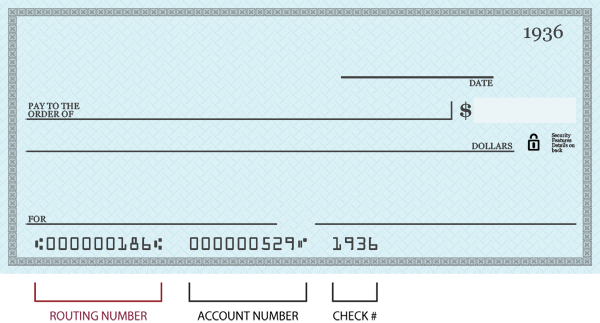Homeowners looking for a way to access a large sum of money may not have to look too far if they have accumulated equity in their home. Using the equity from your home can provide the cash you need for renovations or to improve your overall financial position. And this money can often be borrowed at a relatively low interest rate.
The two most common ways to access equity are through a home equity loan (HELOAN) or a home equity line of credit (HELOC). Before taking on these types of loans, it’s important to have a solid understanding of the difference between them, how to use either wisely and recognize the risks.
HELOANs typically have a fixed interest rate for a specific term, a fixed monthly payment amount and a repayment period of five to 20 years. This makes it easier to factor the home equity loan payment into your budget, but keep in mind that if you still have a first mortgage this will be an additional monthly payment.
Home Equity Loans Pros and Cons
Pro: A fixed interest rate
Pro: Same payment every month for a set period of time
Con: Tapping into all the available equity in your home can work against you if property values decline
Who is a good candidate for a home equity loan?
Home equity loans are best for large, one-time purchases, for those who know exactly how much they need to borrow, and for homeowners who prefer the stability of a fixed monthly payment.
HELOCs generally have a variable interest rate so the rate can change according to the movement of a benchmark (such as the Prime rate). This means your monthly payment may increase or decrease. A HELOC has a draw period and repayment period. During the draw period, you use the loan much like a credit card—borrowing a specific amount of money, paying it back in full or over time with interest. You may also opt to pay interest- only on the amount borrowed during the draw period. In the repayment phase, you can no longer borrow money, but must begin to make principal and interest payments on whatever balance remains on the loan.
Home Equity Lines of Credit Pros and Cons
Pro: Borrow only what you need when you need it against the line of credit
Pro: Flexibility of interest-only payments or principal and interest payments during draw period
Con: Rising interest rates can increase your payment
Con: Without discipline, you may find yourself with a hefty principal and interest payment to payback during the repayment period
Who should consider a HELOC?
HELOCs are best for those who want access to cash as needed over a certain period of time. Accessing the money in smaller increments is better for these borrowers because they’re not exactly sure how much money they will need and when.
Whether you want to renovate your home, consolidate debt, or make a major purchase, compare the features and benefits of our home equity financing options to determine which is right for you.
| Topic | Home Equity Line of CreditVariable rate line of credit, secured by your home, with the option to borrow only what you need, when you need it, up to your credit limit | Home Equity LoanA fixed interest rate loan, secured by your home, to finance a specific amount for a definite period of time |
|---|---|---|
Accessing Your Funds | Simply access funds as needed through Online or Mobile Banking or HELOC checks | Receive your funds in one lump sum |
Payments | Flexible monthly payments during the 10 year draw period; choose between interest only or principal + interest payments | Predictable fixed monthly payments of principal + interest for the life of the loan |
Features & Benefits |
|
|
Reasons to tap into equity
The most common ways to use a HELOAN or HELOC are home renovations, debt consolidation, college costs, emergency expenses and major life purchases.
- Renovate, Repair or Expand – Home improvements are one of the most common reasons homeowners take out a home equity loan or HELOC due to the high cost associated with these types of expenses. Upgrades, improvements and repairs can raise the value of your property and make it a more enjoyable place to live, but it’s best to choose projects wisely. A HELOAN is a good source for large, one-time projects such as a full renovation, construction of an addition, or paving the driveway. Consider a HELOC for more minor expenses like a new front door, bathroom fixtures, upgrading kitchen cabinets or adding a deck or patio.
- Debt Consolidation – Credit cards typically have higher interest rates than other loan options which can make paying off a high balance quite costly if you can’t pay down the debt within a couple of months. Using a home equity loan with a lower interest rate to pay off a high balance or consolidate credit card debt can be a good option. However, it’s crucial that you budget carefully for this loan payment since late payments or a default on the loan could lead to credit issues or the possible loss of your home. If you need to consolidate debt due to financial challenges, it might be worthwhile to seek professional advice to establish a plan to help you manage your finances.
- College Tuition and Expenses – Using a HELOAN or HELOC may be a good way to fund college tuition and/or help cover all of those incidental expenses associated with college. The benefit is mainly due to lower interest rates with home equity loans versus rates for student loans. If you want to fund your child’s education using your equity, be sure to calculate the monthly payments and the ability to pay off this debt before you retire. It’s not advisable to carry debt for children once you are on a limited income, so it may be best to have your child take out a student loan since they will have more years to pay it off.
- Emergency Expenses – The standard recommendation is to have an emergency fund to cover three to six months of living expenses for crisis situations. But sometimes that fund might not be enough to help you stay afloat if you suddenly find yourself in a situation – perhaps you’re out of work longer than expected or have incurred extensive medical bills. In these instances, a home equity loan may be a smart way to supplement your emergency fund.
- Make a Major Purchase – Since you are essentially using your home as collateral for a HELOAN or HELOC, it is recommended that you use caution when making major purchases for items such as a new car or an extravagant vacation. Do your research to ensure an equity loan is the best method for these types of discretionary spending. You may discover better loan options that won’t put your home at risk.
As you figure out your financial plan, consider how much you want to borrow, whether this is a one-time need or money needed for multiple expenses. You also want to ensure your ability to make the monthly payments or have a plan for how soon you can pay down the balance. Some advice to avoid putting your home at risk: don’t borrow more than you need and spend the borrowed money wisely!
Whether you use your home equity to add value to your home, pay off debt or to better your financial position, be sure to go over the numbers. Ensure you can continue to pay your regular mortgage on top of a new home equity loan or line of credit. To get started, use our calculator to estimate how much you can borrow from your home’s equity or simply apply online today.


